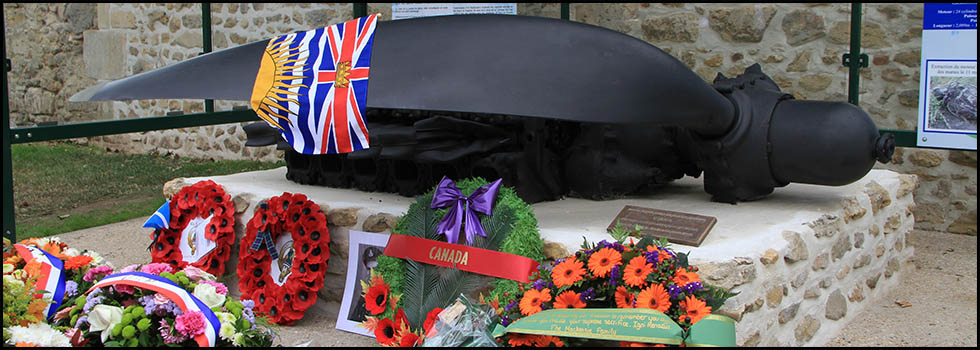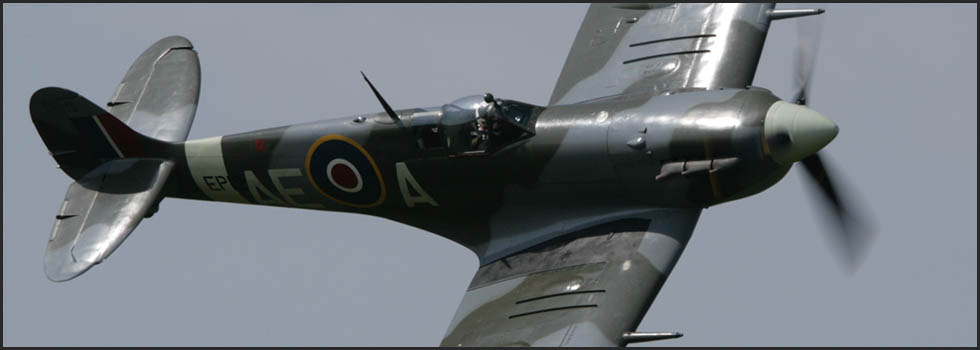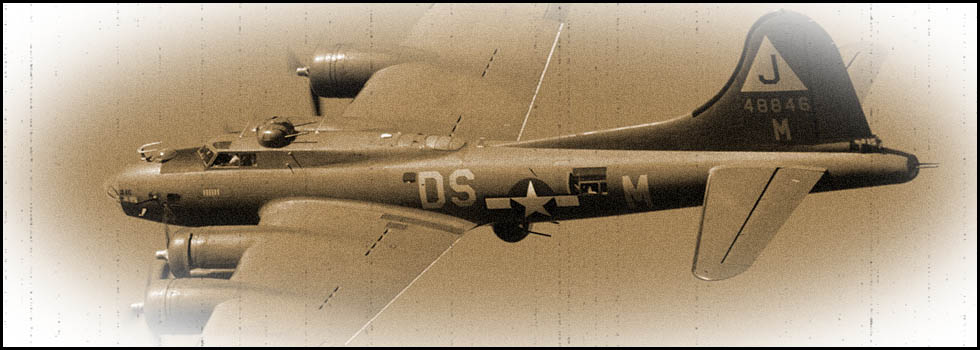20th June 1944
2nd Lt. Heyward Claude SPINKS
P-51B "Mustang" # 43-6935 "Hurry Home Honey"
357th Fighter Group
364th Fighter Squadron
8th Air Force
Eve (Oise)
Copyright © 2017 - Association des Sauveteurs d'Aviateurs Alliés - All rights reserved -
En français ![]()
Article drawn up with the participation of Roger “Titou” Folliot
To save an Allied airman from occupied France meant finding him before the German army could capture him, manage to get him to a safe place and then lead him towards the Pyrenees or the Channel coast and then Great Britain where his experience could again be used in the service of the Allied cause.
The means of saving the American pilot 2nd Lt. Heyward C. Spinks, although fortunately shortened by the advance of Allied troops in France in August 1944, illustrates the first stages of a rescue. From now on it can be described in a more complete way on the one hand thanks to American archives and on the other by a new account from one of the initial French actors.
“Titou” was 18 in 1944. 72 years later, he is one of the very few who is able to give us a direct and therefore more precious account.
Heyward C. Spinks was born on 10th July, 1920 and resided in LaGrange, Georgia. After he enlisted on 3rd September, 1942, he began training as a fighter pilot and then joined the 357th Fighter Group, 364th Fighter Squadron of the 8th Air Force, based near Leiston, Suffolk, England. He flew a P-51B North American “Mustang”, an aircraft reputedly fast, manoeuvrable and of high quality.
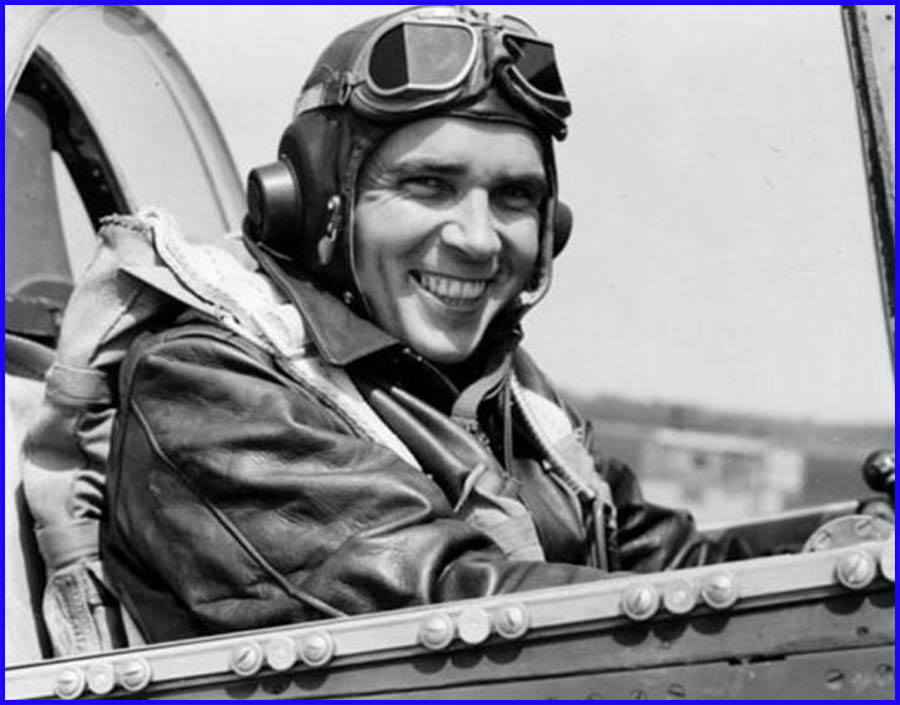
2nd Lt. Heyward C. Spinks
Two weeks after the Normandy Landings, the battle was raging. The Germans were trying to get reinforcements up to the front in Normandy, by road and by rail.
The Allied aviation was extremely active. On the 20th June 1944, at about 17:00, the squadron of 2nd Lt. Spinks, led by Captain Charles D. Sumner Jr. took off from the base at Leiston, in England, on a mission to strafe the ground in the North West of France.

The “C5-T” of 2nd Lt. Spinks is the third from the front.
2nd Lt. Spinks shot up two trains. At 18:30 Captain Sumner noticed a leak of cooling fluid spurting from the motor of the “Hurry Home Honey” of 2nd Lt. Spinks. He called him up on the radio, asking him to check the temperature and pressure of the oil and also the cooling fluid of his engine. 2nd Lt. Heyward C. Spinks answered that everything appeared to be OK. However the Captain saw the aircraft of 2nd Lt. Spinks progressively lose height, his propeller rotating more slowly and then almost come to a standstill before finally making a forced landing in a field of crops. It seemed to him that the pilot had not been injured. (2nd Lt. Spinks later recounted that he did not have time to bale out and that he made the most spectacular landing of his career !)
Captain Sumner Jr. distanced himself hurriedly so as not to attract the attention of the enemy at the site. It turned out later that the “Mustang” had been hit by bullets fired from one of his wingmen.
As for the events which followed on the ground, in order to be as accurate as possible so as to pay tribute to 2nd Lt. Heyward C. Spinks and those who picked him up, we think it is convenient to present an extract from his escape report handed in to his superiors after his return to England.
”…Frenchmen came and helped me fire the gas tanks and destroy my plane…”
“About 10 gathered immediately and took me to a farmhouse at Eve where I was given farmer’s clothing. I was taken from here to another farm, further from town, owned by a Polish family consisting of the farmer, his wife, two sons and daughter. They had lived in France since the last war. The farmer’s first name was “Alonso”. They were very poor but took very good care of me”.
In fact, it is Antoine Kmiecik, an agricultural worker of Polish origin.
Roger Folliot :
 "The news of the forced landing of a “Mustang” with its pilot uninjured, rapidly reached the FNLLI Group (Front National for the Liberation and Independence of France) of Senlis, led by Andre Decatoire. At the same time, Roger ‘Titou’ Folliot, a member of the group commanded by Georges Fleury, alias ‘Carriere’, based at Clermont, was at his parents house in Senlis.
"The news of the forced landing of a “Mustang” with its pilot uninjured, rapidly reached the FNLLI Group (Front National for the Liberation and Independence of France) of Senlis, led by Andre Decatoire. At the same time, Roger ‘Titou’ Folliot, a member of the group commanded by Georges Fleury, alias ‘Carriere’, based at Clermont, was at his parents house in Senlis.
Georges Fleury was the chief of the Centre-Oise sector of the Gaullist movement O.C.M. (Organisation Civile et Militaire), in direct relation with the Central Bureau of Intelligence and Action (B.C.R.A) of the Free French. They had good relations with the Decatoire Group to whom they supplied arms. Alerted by this group of the landing of the ‘Mustang’, I proposed that, together with Jules Fossiez, the Chief of the Senlis Police, we transfer the American airman to a safe place in town.”
“The method was simple : use a bicycle to go to Eve, 17 km away, and to come back with the pilot on a third machine which had been taken on the outward journey, a somewhat delicate exercise but nevertheless possible”.
“Titou” had two bicycles, one a racing bicycle which had very narrow handle bars. Also he had a certain experience of “Aireal” operations acquired with the Clermont Group (Night landings of small English aircraft with parachuted passengers and reception of arms containers). On top of this he spoke a little English. So it was the Fossiez- Folliot team which undertook the operation of finding the airman and bringing him back from Eve to Senlis.
On contact with the airman “Titou”, learning that 2nd Lt. Spinks lived in Georgia, started a conversation about the book “ Gone with The Wind”, so as to relax the atmosphere.
“Titou”, knew the region well. A few years before, when he was a kid of 11, he had taken part in operations to fight a fire in the Forest of Ermenonville. The airman certainly did not realise that he was passing through one of the most beautiful regions of the Ile de France : Ermenonville, Chaalis, Senlis and later on, Chantilly.

Roger Folliot :
“We met a few vehicles of the Wehrmacht. We whistled happily... There were no controls. In case of interception, the risk for the American was to become a prisoner of war in Germany according to the Geneva Convention. For us, the French, it was being shot on the spot, as was announced on posters all over France, a Bekanntmachung of General von Stulpnagel.
Never can enough be said about how bicycles loyally helped clandestine combatants to transport messages, arms, a friend or half a sheep etc... sometimes even hooking up to a vehicle".
“Titou”, remembers a journey from Clermont to Paris on the National 17, hanging on by one arm to a German armoured vehicle, from Pontarme to Saint-Denis. As a mark of respect he has kept one of his bicycles for 75 years.
“The next stage in our operation was to entrust our airman to Mlle Marguerite Gronier, local chief of the Secours National of Senlis, rue du Chatel, an official charitable organisation of the Vichy authorities. This position presented Melle Gronier an excellent cover for her clandestine activities”.
“Titou”, left the airman now that he was in a safe place. 2nd Lt. Spinks stayed there for a little more than a month.
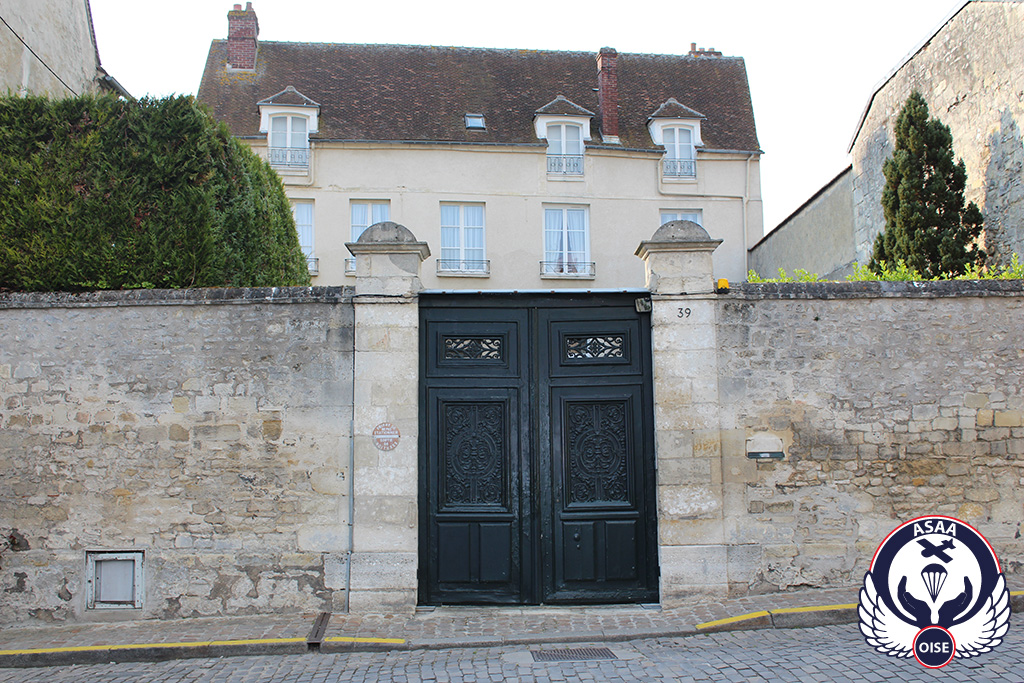
The Secours National, rue du Chatel, in Senlis
Three days after settling into Senlis, on the 29th June, he saw another American fighter pilot arrive, whose plane had been shot down two days before in the departement of Aisne. He was 2nd Lt. Thomas W. Ruark, 24 years old, from Maryland. By a strange coincidence Spinks and Ruark knew each other. They had met during their training as fighter pilots in the United States. A further surprising fact was that 2nd Lt. Ruark had just been found and taken in charge by Rene Charpentier, a very active member of the Decatoire group, to the South of Ermenonville, at Ver-sur-Launette, a village near Eve where Jules Fossiez and “Titou” had picked up 2nd Lt. Spinks.


2nd Lt. Heyward C. Spinks 2nd Lt. Thomas W. Ruark

Spinks, Melle Gronier, Ruark, Paulette Thomas and Rene Charpentier
The war, its turmoil and its monstruous swirling upheaval can create all sorts of situations. It is however very rare that two American pilots of “Mustangs”, who had been together in the United States, sent over the Atlantic to fight and hitting the ground on almost the same day near two French villages which were near to each other, end up in the same safe place.
After staying in Senlis almost five weeks, a new stage evolved. This was to join, in principle, the relay of great escape networks of France, such as the Comete and Shelburn networks which led over the Pyrenees or towards the Channel coast.
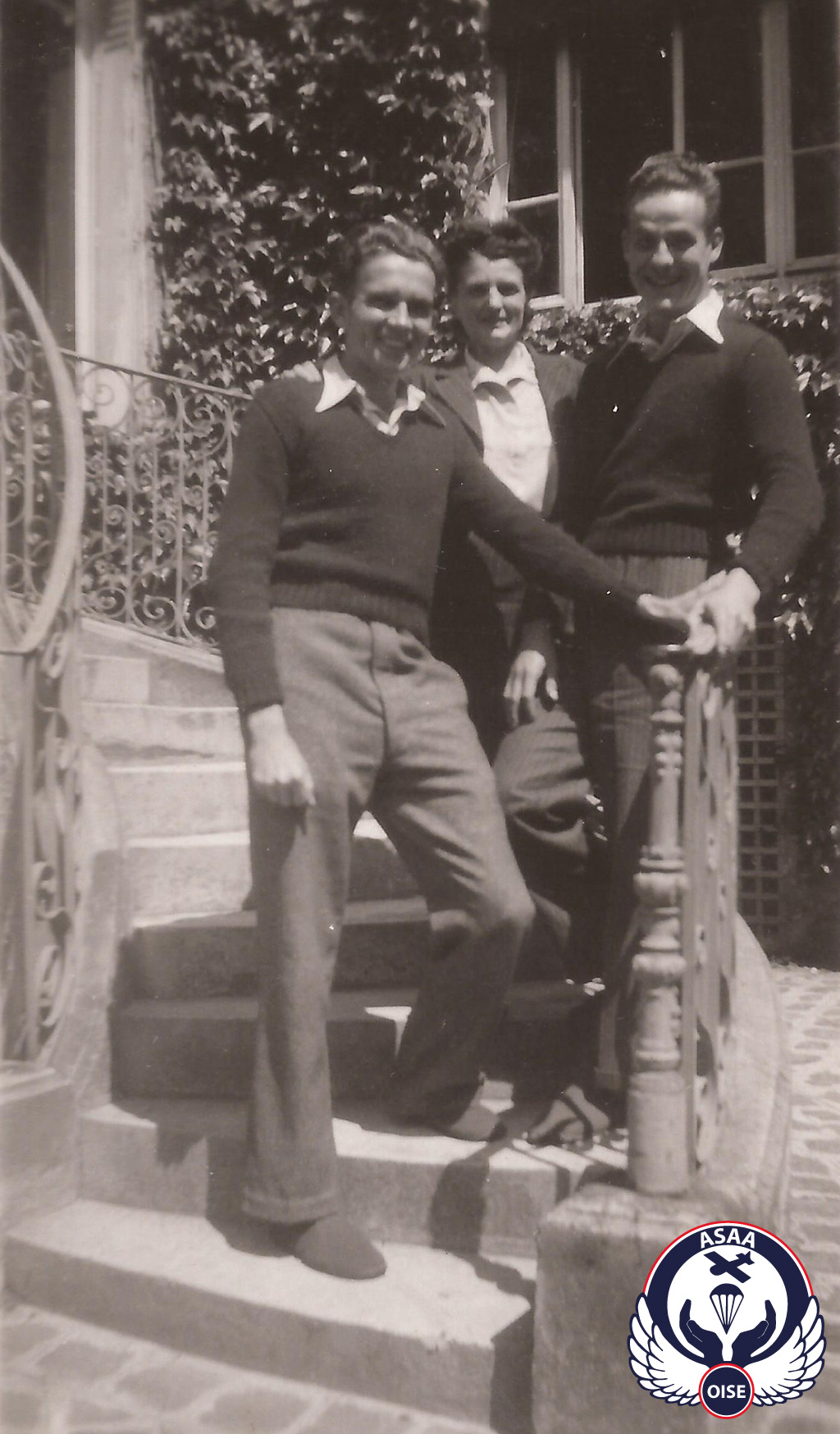
It was Jules Fossiez and his brother in law Rene Charpentier who , first of all, took the two 2nd Lts. Spinks and Ruark to Chantilly. There, our two airmen were lodged in the rue du Connetable at the house of Louis Mesureur, alias “Louis le Coiffeur”, who was active in a network having radio contact with London.
The description of the stages after that of Chantilly, based on the personal report of 2nd Lt. Spinks, is likely to be inaccurate concerning the geography and the specialised networks used. But at least it gives an idea of the complexity of the chain of transfer followed by an airman being rescued.
2nd Lt. Heyward C. Spinks was successively taken in charge by :
- two female guides who took him by train as far as the Gare du Nord, in Paris.
- a nurse who gave him lodging, along with three other airmen (two English and one American).
- a disused veterinary clinic, near the Place d’Italie, for two days.
- Mme Yvonne Diximier, a widow who lived in the rue Jean Moreas, in the 17th arrondissement, where he stayed in the company of another airman.
The usual relays could not be considered for the future.
Before and after the Normandy Landings, the Allied aerial attacks in occupied France were particularly concentrated on the railway junctions so as to paralyse the transferring of German reinforcements towards the Normandy front. But they also complicated the evacuation of escaped airmen towards the Spanish frontier. So it was decided to create different camps in the Forest of Freteval (Loir-et-Cher) under the direction of Lucien Boussa, a Belgian airman who had served in the RAF, and Jean de Blommaert. Not far from Normandy, the escaped airmen were assembled there waiting for the soon-to-arrive Liberation.
So it was that on the 31st July, accompanied by other airmen and escorted by different guides, 2nd Lt. Spinks in a few days got to one of the established camps in the Forest of Freteval where he arrived on the 6th August.
By the time 2nd Lt. Spinks arrived 125 airmen were already there. On the 12th August 1944 Allied troops liberated the region. Two days later, on the 14th August, 2nd Lt. Spinks and other airmen were taken on a bus, protected by British paratroops. Outside the town of Le Mans, the vehicle turned over. As he was slightly wounded, Spinks spent time in several hospitals before being repatriated to England on board a hospital plane. From the beginning of his mission, having used four means of transport, plane, train, bus and bicycle, we can say that it was this last one which caused him the least trouble !
After that, 2nd Lt. Heyward C. Spinks, who fought for the victory of the Allies, at last found FREEDOM.
After the war, he came back twice to Senlis to meet and personally thank his rescuers. He died on 26th January 1990 at Beaufort, South Carolina.
Roger Folliot :
“As for us, we felt as if we had alleviated a little the distress which had seized us in June 1940. France, with its thousands of years of history, its language, its civilisation and way of life could not be dominated definitely by a dictatorial and conquering regime. We just had to say “No”, think the opposite, make little signs and then, organising ourselves, go for more ambitious actions. Whatever, TAKE ACTION. That is what we tried to do”.


